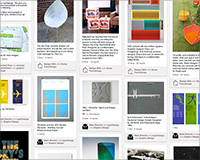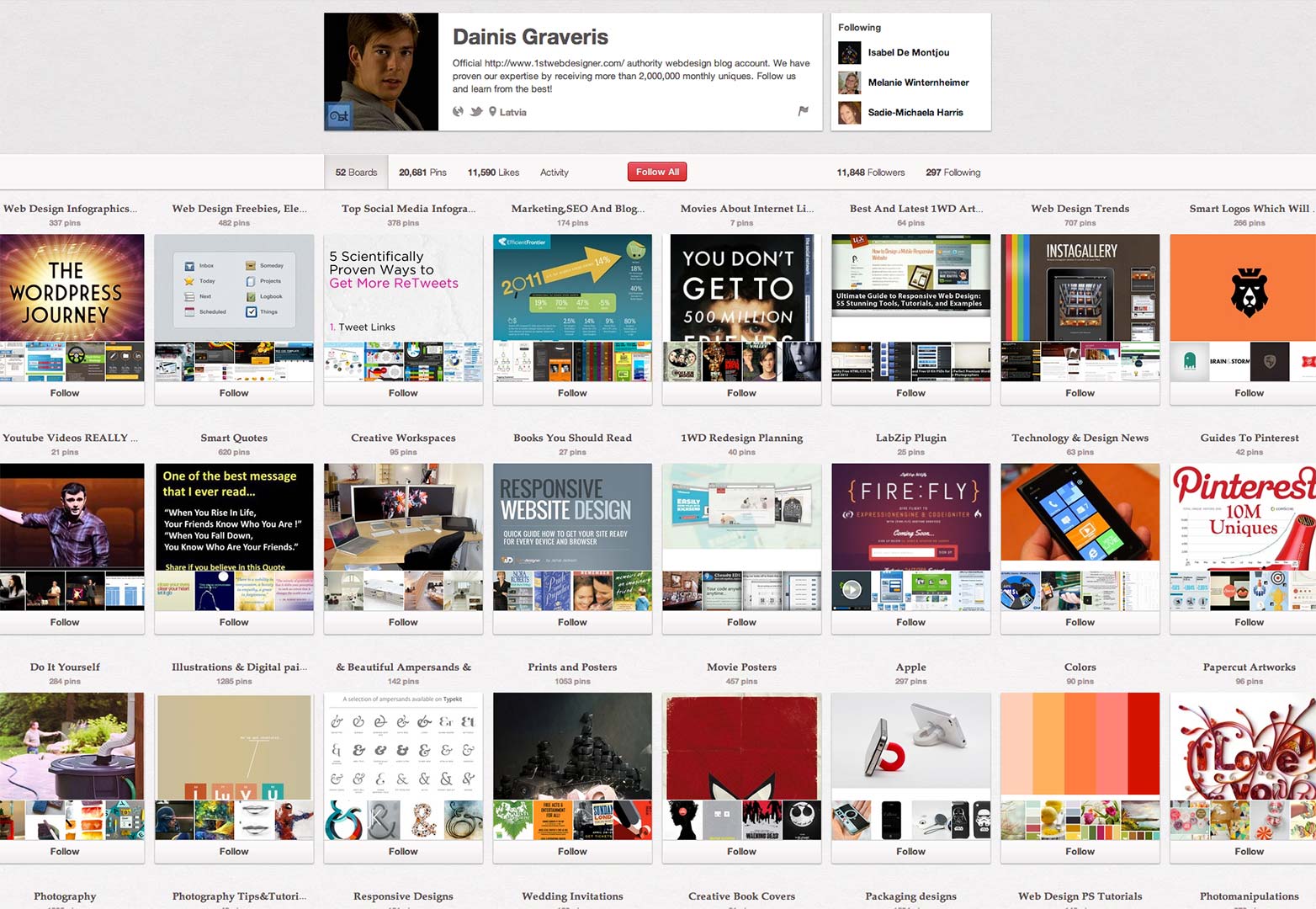
 In just a couple of years, Pinterest has established itself as the third largest social networking website, behind Facebook and Twitter (and ahead of the likes of Google+).
In just a couple of years, Pinterest has established itself as the third largest social networking website, behind Facebook and Twitter (and ahead of the likes of Google+).
For a website that is still in relative infancy, such a record is definitely commendable. The question that now arises is, can we harness Pinterest’s popularity to promote our online ventures? In other words, just as we employ Twitter and Facebook to create an online identity of our businesses, will it be possible to make use of Pinterest and reach our customers and clients using it?
Of course, we can! In this article, we'll take a look at some tips and tricks that will help us accomplish just that.
What makes Pinterest so popular?
The popularity of Pinterest can be attributed to:
- Catering for people’s need and desire to learn, acquire and share things of interest. By default, all human beings have an urge to discover new stuff pertaining to their particular area of interest. If I like poetry, I'll have a natural tendency to look for new and amazing poems every now and then. Similarly, for web design enthusiasts, this urge takes shape in the form of design showcases and inspiration sites, etc.
- People generally share common interests and hobbies. Picture this: if I am into web design, chances are, I'll keep in touch with others in the industry. Naturally, we shall share design and development ideas that we find impressive with each other. Pinterest facilitates such exchanges with a global audience.
- Human curiosity compels people to check out others’ interests too. This is the primary reason why social networks, when done right, tend to succeed. Orkut succeeded, MySpace succeeded, then came Facebook and Twitter, and now, Pinterest!
- Who doesn't like photos? Seriously, who doesn't?
Ok, so how does Pinterest work?
The basic mechanism is simple: I like something, I share or ‘pin’ it, my friends with similar interests pick it up and re-share or ‘repin’ it, and the spiral continues! While this mechanism can be applied to almost any social networking website, Pinterest has one added advantage over other websites — it offers its users a unique and streamlined experience based on their interests.
For example, on Facebook you have to go through the content in your news feed in a linear manner — before I get to design-related content shared by my colleagues, I also have to scroll through kick-boxing tips and updates shared by my high school classmates (of course, I can retain such friends in my friend list and mute or unsubscribe from their updates, but the process itself can be tedious if I have a big friend list). When it comes to Pinterest, on the other hand, my feed is not bombarded with topics that are unrelated to my interests. The anatomy of Pinterest itself lets me focus on content that I am interested in.
Alright, so how do I harness the power of Pinterest?
The basic principles, such as updating regularly and providing relevant content, are the same as those of any other social network. So we'll by-pass such basics and focus entirely on key elements of Pinterest that set it apart from other social networks and deserve a proper look.
Focus on "interests"
As you must have judged by now, the biggest advantage of Pinterest is the fact that the community and user base is both diverse and content-centric. There aren’t as many trolls and fake user profiles as compared to other social networks (at least, as of now). You can easily focus on the topics that seem most interesting to your users — a simple glance on some of the popular boards will show the topics that get the maximum number of repins and shares.
Presentation
Take a look at Dainis Graveris’ Pinterest profile. If you browse through the boards and the content that he shares, you’ll see that there is a judicious blend of topics from his design blog and general stuff that may appeal to his target audience. Thus, while he shares the most popular articles from his blog, he also shares guides to using Pinterest, Infographics, Design-related jokes and quotes and even Movie Posters! Such awesome presentation not only impresses visitors but also compels them to keep coming back to his page — after all, who isn’t impressed by that funny joke or obscure quote?
As a result, presentation of your content goes a long way in establishing your Pinterest profile as a go-to resource among fellow users.
Visual appeal
This one is relatively simple. If it were a blog on Blogger or WordPress.com, words would have been more important than pictures. However, when it comes to Pinterest, images and pictures take the driver’s seat. As you browse through your feeds and boards on Pinterest, you’ll notice that the stream contains images with captions, and nothing else. While re-sharing, you can change the caption, but the image itself remains unaltered.
Thus, it becomes crucial that the images and pictures that you share convey the essence of your content in an effective manner. In other words, images shared on your boards should be powerful enough to appeal to the viewers and portray the true identity of your brand.
Interaction
Creating boards that contain great stuff which is relevant to your users is the first step towards using Pinterest correctly. Another important step is to acknowledge those who are sharing good content. Re-pins and comments across boards and feeds of other users not only shows that you respect their efforts but also gives a message that you are involved with the community and are passionate about your genre of work. Just remember that old saying: no man is an island.
Along similar lines, to engage user involvement, you can create group pinboards and invite users to share content. Another good option can be to run contests on your pinboards wherein users can participate and win exciting prizes. This will not only spark interest but also encourage participation and contribution which will go a long way in helping you establish your presence on Pinterest.
Diversity
Let us turn to Dainis Graveris’ Pinterest profile again. Once more, go through the boards — Fun Stuff, Infographics, Logos, Movies, SEO and Marketing, Men Style, Creative Workspaces, and what not! The list goes on and on. Notice something? He has created multiple boards, all catering to topics about design and creativity, yet has kept the content matter diverse. You can get jokes, quotes, SEO tips, style ideas and other creative stuff from his profile. While his main goal is definitely to share content from his blog, he has also created many boards that share random stuff of relevance.
The key here is to share diverse content. Remember, users can follow you, or simply decide on following just a select few boards. Thus, it always helps to have diversity in your content so as to attract newer visitors.
You wouldn't want to be typecast as stale or boring, would you?
Visibility and reach
What is the point of sharing wonderful content if it cannot reach potential customers? In other words, simply sharing great content is not enough; you also need to ensure that such content reaches a wide audience.
Apart from naming your boards in a proper manner, you can make use of the hash-tags (yes, Pinterest supports them, much like Twitter).
Such tags not only make your images search friendly but Pinterest’s own sharing tools too pick up on the hash-tags to classify your content.
Conclusion
All said and done, Pinterest is a powerful platform and with its ever-increasing user base, it is definitely a must-try social network for individuals and aspiring businesses alike. Further more, if you wish to promote your online venture in an effective manner, Pinterest should not be overlooked. Sharing quality content on your pin boards can go a long way in helping you impress your potential clients and customers, as well as establishing your own identity in your niche market.
What do you think of Pinterest? Do you use it to share business content? Got any tips of your own? Let us know in the comments below.
















